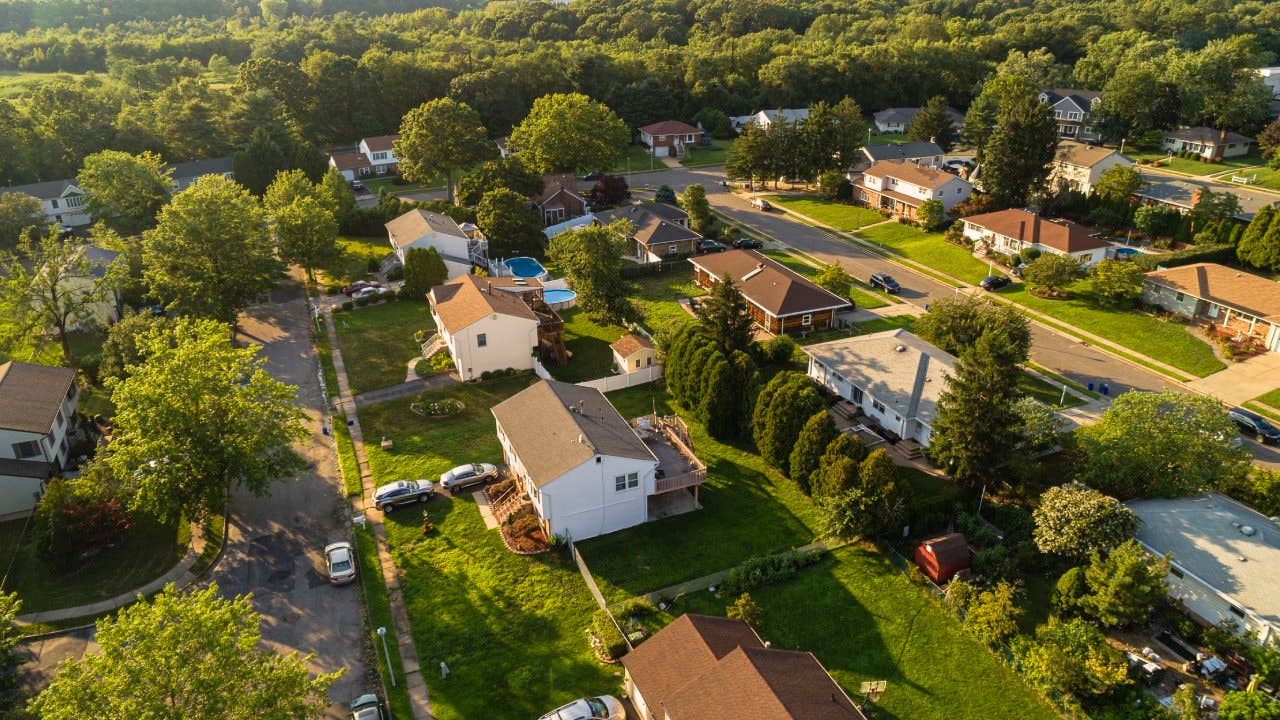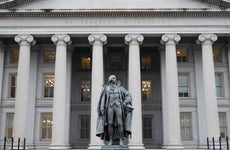U.S. debt downgrade means mortgages just got more expensive

The Bankrate promise
At Bankrate we strive to help you make smarter financial decisions. While we adhere to strict , this post may contain references to products from our partners. Here's an explanation for .
What to know
- Fitch Ratings’ recent downgrade of U.S. government debt pushed the 10-year Treasury yield to its highest level this year.
- Mortgage rates track the 10-year Treasury: When that meter rises, so do 30-year fixed rates.
- While the downgrade isn’t major cause for alarm, its ripple effects could keep mortgage rates elevated for the time being.
A bond rating agency’s downgrade of U.S. government debt roiled markets — and created just one more reason for mortgage rates to stay firmly near their highest level in two decades.
Fitch Ratings announced late Tuesday it had cut the U.S. government’s credit grade one level, from AAA to AA+. On Wednesday, yields on 10-year Treasury notes peaked as high as 4.1 percent. The 10-year Treasury is the benchmark most closely connected to 30-year fixed mortgage rates.
“That is not good news,” National Association of Realtors Chief Economist Lawrence Yun said of the downgrade and subsequent rise in Treasury yields. “That is going to make the mortgage rate a little higher.”
Mortgage rates already uncomfortably high
The average rate on a 30-year loan rose to 7.09 percent in Bankrate’s most recent national survey of lenders, nearing the 2022 peak of 7.12 percent. Rates haven’t been that high since 2002. During the depths of the pandemic, they fell below 3 percent — rock-bottom levels that spurred a housing boom and refinancing frenzy.
For borrowers, the jump in rates has been a budget-buster. Borrowing $300,000 for 30 years at 3 percent means a monthly payment of $1,265. Jack up the rate to 7 percent, and the payment becomes $1,996.
While economists have predicted a retreat for mortgage rates, the rating agency’s downgrade puts one more obstacle on the downward path.
“This could have serious consequences,” says Dick Lepre, a loan agent at CrossCountry Mortgage in Alamo, California.
Why was U.S. debt downgraded?
In its announcement, Fitch — one of the “big three” credit rating agencies in the U.S. — pointed to a cycle of partisan brinkmanship in Washington. The latest standoff came in June, when Congress flirted with a government shutdown before reaching a last-second agreement on the federal debt ceiling.
“In Fitch’s view, there has been a steady deterioration in standards of governance over the last 20 years, including on fiscal and debt matters, notwithstanding the June bipartisan agreement to suspend the debt limit until January 2025,” the rating agency stated. “The repeated debt-limit political standoffs and last-minute resolutions have eroded confidence in fiscal management.”
Fitch also pointed to rising levels of government spending and to what it called the likelihood of a “mild” recession later this year — although many economists have begun to say it’s possible the U.S. economy will avoid a recession entirely.
Essentially, the rating agency believes U.S. government debt is riskier than previously thought. Investors, therefore, demanded a higher yield for holding the debt.
[This] is not good news. [This] is going to make the mortgage rate a little higher.— Lawrence Yun, Chief Economist, National Association of Realtors
While sobering, the downgrade reflects mild concerns rather than a looming crisis. Fitch still considers Uncle Sam a “very high credit risk.”
“Everyone knows the U.S. government will pay those debts,” says Yun, who is holding out hope that members of Congress will take a hint from the downgrade and set aside political bickering.
“Maybe this is a wake-up call,” says Yun.
Sean Snaith, director of the University of Central Florida’s Institute for Economic Forecasting, likewise sees the downgrade as a call to action.
“This is a warning shot across the U.S. government’s bow that it needs to right its fiscal ship,” says Snaith. “You can’t just spend trillions of dollars more than you have in revenue every year and expect no ill consequences.”
Downgrade one part of bigger mortgage rate picture
The debt downgrade had an immediate effect on the 10-year Treasury, but that gauge is only one piece of the complicated puzzle that drives mortgage rates. The impetus for day-to-day rate movement, especially, can be murky.
While the Federal Reserve doesn’t directly determine fixed mortgage rates, the central bank does set the overall tone — and as it boosted its policy rate from zero in early 2022 to 5.25 percent now, mortgage rates rose sharply.
For 30-year rates, however, the most relevant benchmark is the 10-year Treasury yield.
That brings up a quirk of post-pandemic mortgage rates: The gap between 30-year mortgage rates and the 10-year yield is unusually wide.
This interval, known to economists as “the spread,” typically runs between 1.5 and 2 percentage points. If the 10-year yield sits at 4 percent, for example, the 30-year fixed mortgage rate should track close to 6 percent.
However, the spread has jumped to more than 3 percentage points — the highest level since the darker days of 2009, according to Bankrate research. That means that instead of a 4 percent yield translating to a 6 percent mortgage rate, borrowers are paying 7 percent for 30-year loans.
Of course, any relief from rising mortgage rates would be welcome news for borrowers, especially first-time homebuyers, who are most affected by the combination of still-high home prices, higher mortgage rates and the shortage of homes for sale.
While we can expect higher mortgage rates for now, Yun and other housing economists say they could fall back to the low 6 percent range later this year — a forecast that hinges on inflation continuing to cool and the Fed hitting the pause button on rate hikes.
“If the data shows moderating inflation, I think it’s possible the Fed may stop raising interest rates for the rest of the year,” says Yun.
Related Articles




Congress agrees on debt ceiling increase, narrowly avoiding massive interest rate increase